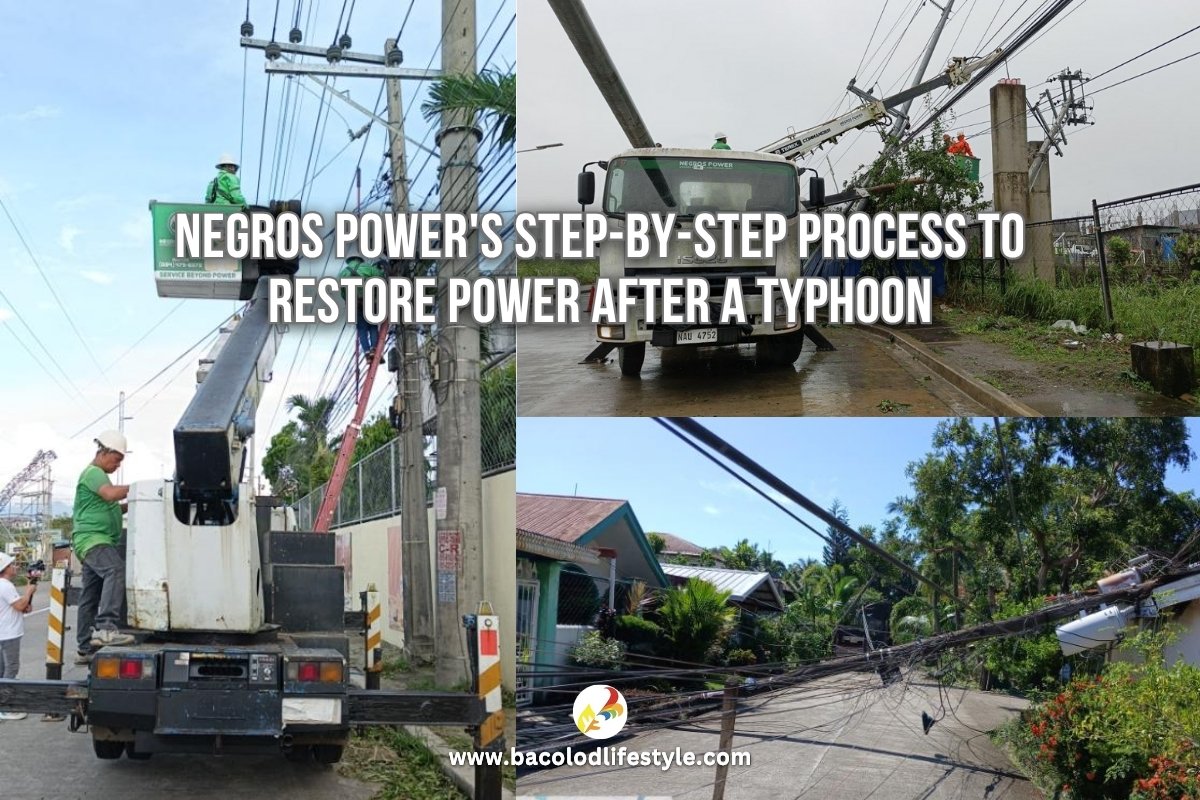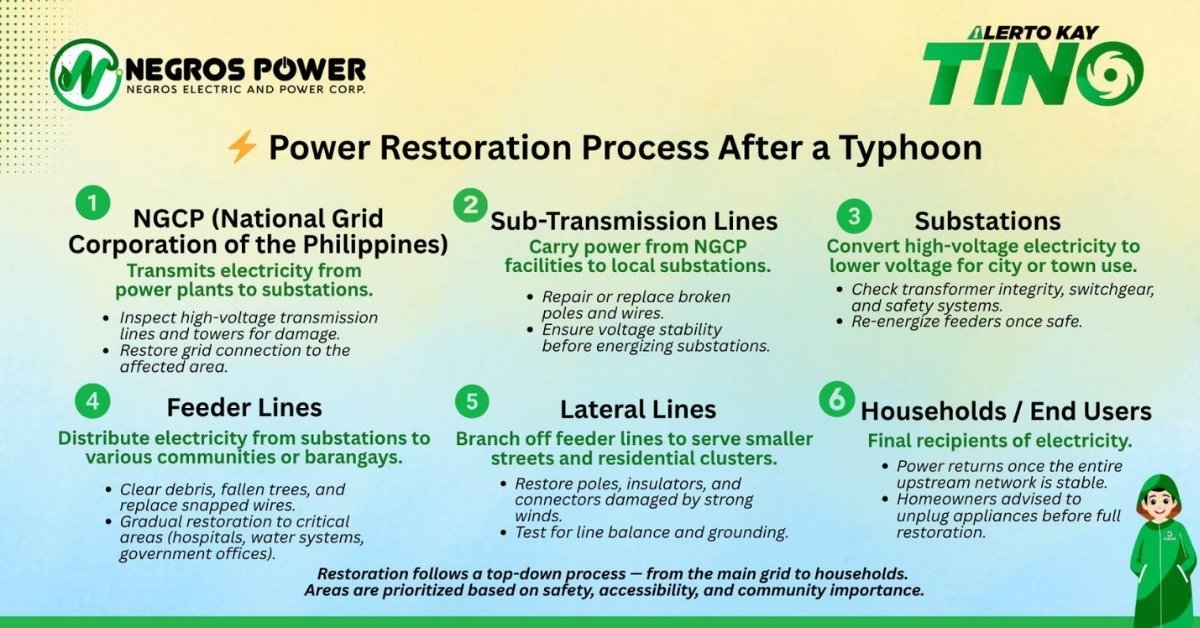Understanding How Negros Power Restores Electricity After a Typhoon
When a typhoon strikes, losing electricity is one of the biggest worries. Lights turn off, appliances stop working, and daily life halts. Behind the scenes, a huge effort begins immediately to restore power safely and effectively.
Negros Power wants consumers to know that getting electricity back isn’t as easy as flipping a switch. It’s a detailed process that involves several teams and systems, from the main power grid to your home. Let’s simplify it.

Step 1: The Role of NGCP – The Backbone of the Power Grid
The National Grid Corporation of the Philippines, or NGCP, is the first to act after a storm. They serve as the “highway” for electricity, transmitting power from large plants to different regions across the country.
After the typhoon passes, NGCP engineers quickly inspect high-voltage transmission lines and tall steel towers for damage. These structures are crucial because if even one section of the grid fails, entire provinces may lose power.
They look for broken wires, fallen towers, or anything that could block the power flow. Once repairs are completed and the main grid is stable, NGCP reconnects affected areas so electricity can start flowing again toward local substations.
Step 2: Repairing the Sub-Transmission Lines
Once NGCP fixes the main grid, attention shifts to the sub-transmission lines. These smaller lines carry electricity from NGCP facilities to substations operated by local power distributors such as Negros Power.
Think of these lines as smaller highways leading to your city. If they’re damaged, power can’t reach your area even if the main grid is back up.
Negros Power crews carefully check these lines, replacing broken poles or snapped wires. They also test the voltage to ensure everything is stable before powering the substations.

Step 3: Checking the Substations
Substations convert electricity from high voltage to a lower, safer level suitable for cities or towns. These facilities play an important role in distributing electricity to homes, schools, hospitals, and businesses.
Before re-energizing a substation, Negros Power teams ensure that everything inside is functioning correctly. They inspect transformers, circuit breakers, and other essential equipment. Safety is always the top priority, so they take their time. Once all systems are confirmed safe, they gradually re-energize feeders connected to that substation.
Step 4: Energizing the Feeder Lines
Feeder lines deliver electricity from the substations to various communities or Barangays. This is when many people start to see their lights come back on.
However, not everything is restored at once. Negros Power prioritizes critical areas first, such as hospitals, water pumping stations, government offices, and evacuation centers. These locations are vital to public safety and need power immediately.
Crews then move on to other parts of the city, clearing debris, cutting away fallen trees, and replacing damaged wires as they go.
Step 5: Reconnecting the Lateral Lines
Once the feeder lines are stable, teams work on the lateral lines. These smaller connections branch out to serve individual streets, residential areas, and small businesses.
Lateral lines often suffer the most damage during a typhoon because they are close to trees, houses, and other structures. Negros Power linemen put in a lot of effort to fix poles, replace insulators, and reconnect lines safely. After everything is restored, they conduct several tests to ensure power is balanced and grounded before turning it back on.
Step 6: Power Returns to Households
Finally, electricity reaches homes and businesses. Before plugging everything back in, homeowners should take a few precautions.
Negros Power advises people to unplug all appliances before complete restoration. This helps prevent damage from sudden power surges when electricity returns. Once the power is stable, you can plug in your appliances one by one.
Why Restoration Takes Time
Many wonder why it can take several hours or even days to restore electricity fully. The answer lies in the step-by-step process and the priority system.
Restoration follows a top-down approach—from the main power grid down to households. Crews prioritize areas based on:
- Safety—making sure no live wires or hazards are present.
- Accessibility—some areas may be hard to reach due to floods or fallen trees.
- Community importance—hospitals and public services come first.
The Bottom Line
Power restoration after a typhoon is a complex but organized operation. Every step matters, and each one must be completed safely before moving to the next.
So, the next time a typhoon affects Central Negros and the lights go out, remember that Negros Power and its partner agencies are working tirelessly—inspecting, repairing, and testing—to restore electricity to every home as quickly and safely as possible.
More Articles about Negros Power:



